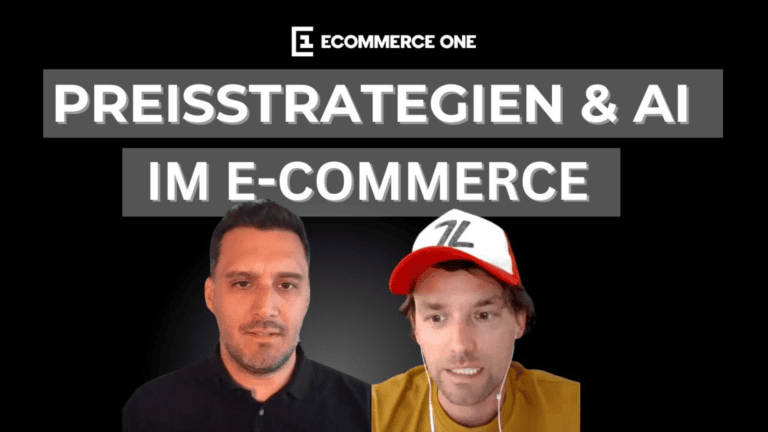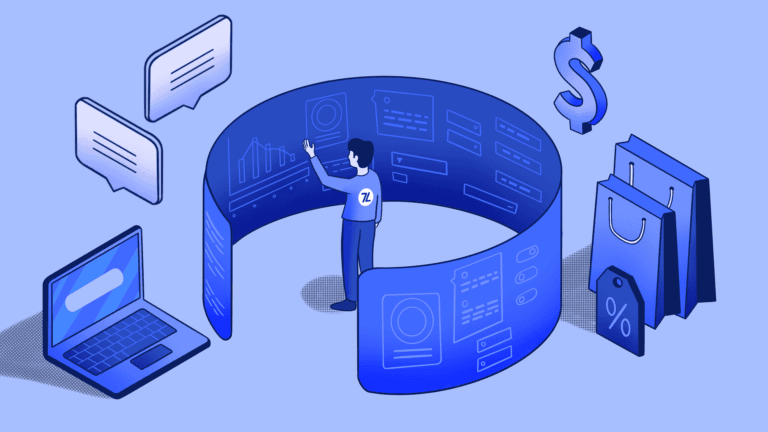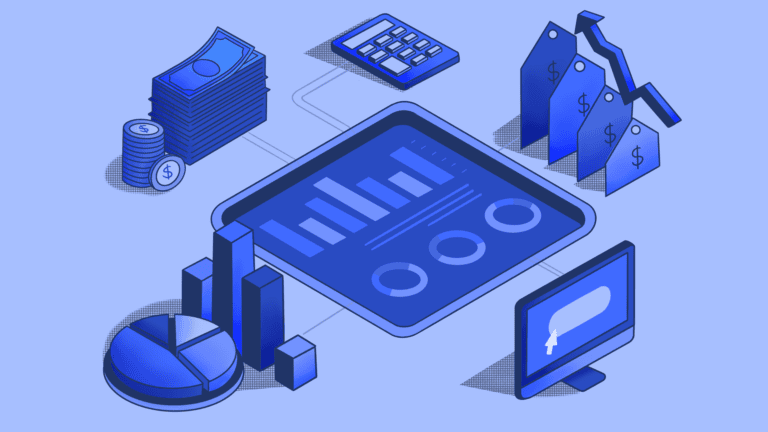When consumers hear “dynamic pricing”, they think of airlines and ride sharing platforms changing their prices by the hour, turning booking into a lottery. The only winner: the companies’ bottom line. When a whole industry agrees on this practice, companies might get away with it, but in most scenarios companies want to avoid backlash from frustrated buyers and adopt a dynamic pricing model where everybody wins.
AI-based pricing done wrong can easily backfire
With artificial intelligence becoming mainstream in more and more business departments, AI-based price optimization is also getting traction. This is no surprise; according to research by McKinsey, companies with traditional pricing fail to hit the best price 30 % of the time which equals a huge loss in revenue. With intelligent pricing software, however, companies can seamlessly realise year on year profit increases of on average 5-10 %.
What exactly is AI-based dynamic pricing?
Unlike rule-based dynamic pricing, which only takes a few influencing factors into account and has to be adjusted manually, the algorithms in AI-based pricing can recognize relevant influencing factors from various data sources. Depending on the software, they execute price adjustments automatically to achieve business objectives. Thus, price adjustments can be carried out at product or channel level with high frequency, up to hundreds of times a day.
In e-commerce and tourism, AI-based pricing is already common, but as customers have been used to high price volatility for a long time, the implementation of more sophisticated pricing tools has not led to any major outcry. However, with AI-based pricing entering new industries and companies being more vocal about their strategies, this has changed.
When Britain’s largest pub group, Stonegate Group, announced it was raising prices at 800 of its venues during peak times to help cover costs for extra staff and licensing requirements, with pints costing an extra 20 pence on average. The news caused a stir in the country. Customers were not pleased, dubbing the change as “unhappy hour” and accusing Stonegate of price gouging. In their opinion, the new practice damaged the relationship between pubs and customers, added more financial pressure at an already difficult time and potentially excluded some people from a basic experience of community.
Another prominent example of AI-based pricing causing a stir is the concert ticket industry. In 2022, Ticketmaster’s dynamic pricing system received negative press when selling floor seats for a Bruce Springsteen concert for more than 4000 US-Dollar. A similar wave of outrage happened when AI-based pricing was implemented for Coldplay and Harry Styles concerts adjusting prices according to demand.
AI-based pricing is more than surge pricing
In the last decades, dynamic pricing has become increasingly common as our technical toolset to implement it has evolved and the benefits for companies grew too significant to let pass. In lots of cases, customers not only accepted the volatile prices, but oftentimes also welcomed them. This is because dynamic pricing, and, in extension, AI-based pricing, is not equal to surge pricing.
Yes, prices may increase with demand but depending on the capacities of the software, they may also be reduced at other times. Strategic buyers wait to get their desired products when prices are especially low at rates that companies without data-driven price optimization might otherwise shy away from because they seem not viable. Also, frequent sales and discounts for new-time or recurring buyers are funded by the margins that companies are able to realize due to the new intelligent pricing technology.
AI-based pricing also helps retailers to become more sustainable. With 7Learnings’ price optimization, companies can steer prices according to business goals. If a retailer wants to reduce stockage for a product by a certain date because it is seasonal or perishable, customers will benefit from price reductions to clear out space for new and fresh items and at the same time save products from going to waste.
French grocery chain Carrefour has implemented electronic product labels which adjust for discounts of overripe or almost perished goods, and has not seen any major backlash from their customers. It was and is just a matter of time until electronic labels become the norm. Recently, Walmart has also announced a switch to electronic price tags to “rapidly update prices”.
What determines if AI-based pricing is accepted?
When the first restaurants implemented AI-based pricing, making a dinner on a sunday more expensive than on a regular Wednesday evening, customers did notice and protested. In a survey of the software company Capterra, people called dynamic pricing in restaurants “price gouging”. However, having different price points for different times is nothing new in gastronomy. Nobody was bothered that dishes on the business menu are less expensive than on the regular dinner menu. What changed?
Whether AI-based pricing is perceived as gouging or understandable business procedure highly depends on the way companies utilise price optimization and communicate their decision. Customers value transparency. When they are able to understand the reasoning behind AI-based price increases, they are more likely to stay loyal to the brand as they were given the choice to adjust their buying behaviour.
The option to not communicate the introduction of AI-based pricing is the least recommendable, as customers are too smart not to find out in our hyperconnected world.
In the end, it boils down to business ethics. If a company quadruples its service fees on New Year’s Eve, the majority of customers might consider this a rip-off, whereas we might welcome a few cent surcharge at rush hours in local stores if it helps minimize queues at the checkout and offers the flexible buyer an opportunity to save.
AI-based pricing by itself is neither ruthless nor exploiting. It’s the company and its processes that decide who benefits. We are convinced that with transparent communication and a fair use of AI-based pricing, companies will reap the benefits of higher profit margins without losing customers.
3 ways customers benefit from AI-based pricing
If implemented correctly, AI-based pricing enables retailers to enhance customer experience. Here are just three ways to create a win-win scenario in pricing.
Customer-informed pricing
AI-based pricing is by its nature data-driven. If algorithms use historic purchase data and seasonal demand to calculate price elasticity, they help companies to listen more to their customer base. If the majority of customers decide that 90 euros is too high for a certain pair of shoes, the company might lower the price – even before its competitors.
Customers gain power. They can influence price politics when aligning their values and opinions with their purchasing behaviour. If retailers see a high price sensitivity for certain items, they will likely reduce prices until they reach a level of general acceptance.
Prevents “out of stock:
Some AI-based pricing algorithms, such as 7Learnings, are able to take stock levels into account when making pricing suggestions. They raise prices when stocks are low to reduce demand and avoid unavailability of items. So customers who really want a product are still able to buy it for a small surcharge.
Supply chain interruptions have not been just a phenomenon during the pandemic, but remain a real issue in a volatile globalized marketplace. AI-based pricing is one way to still offer fast deliveries and continued availability for customers despite uncertainties.
New options for discounts
If stock levels are high, intelligent algorithms encourage price drops to increase sales and make space for new products. So retailers limit their revenue loss while customers who want to buy trending items benefit. Additionally, those who are willing to postpone their purchase for a while can grab a bargain later.
Consumers need to keep in mind that profit raises are generally achieved by small price adjustments on a product level that add up on a larger scale. Companies can also then invest in new products and better customer experience instead of just face-lifting their numbers.
AI-based pricing done right
AI-based pricing is here to stay. The advantages for companies are significant and explain why we are seeing a rapid spread of this new pricing model across industries. However, it is a development that has not yet seen widespread consumer acceptance, despite there being positive examples of its implementation that did not grab headlines.
For companies to not lose customers over the introduction of AI-based pricing, it will be crucial to communicate the rationale behind their decision. Customers need to understand that dynamic pricing doesn’t necessarily mean surge pricing. Prices can both increase and decrease in alignment with company goals. If customers understand their benefits in the equation, they are more likely to accept it. In the end, AI-based pricing can create a win-win scenario when implemented correctly: It helps setting prices based on demand, ensuring product availability, and offering discounts for overstocked items



